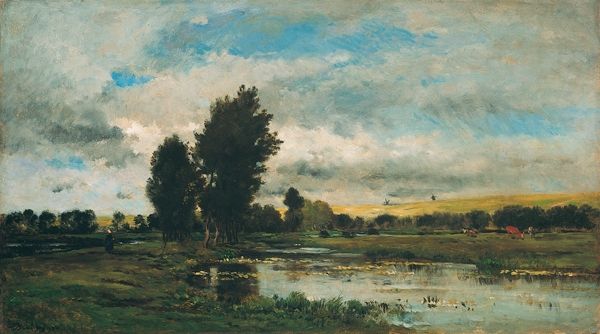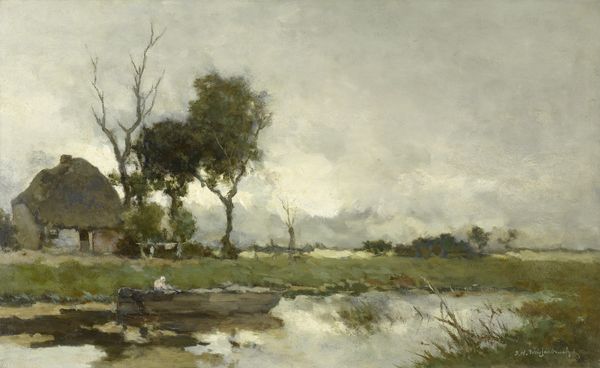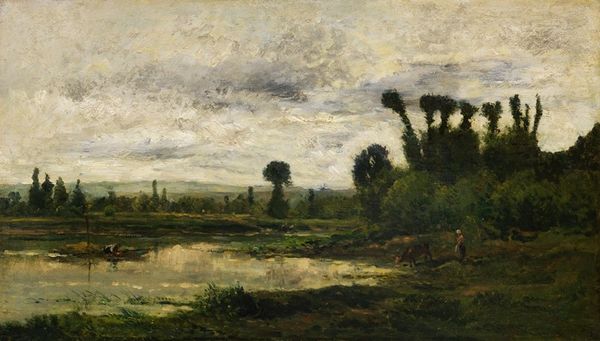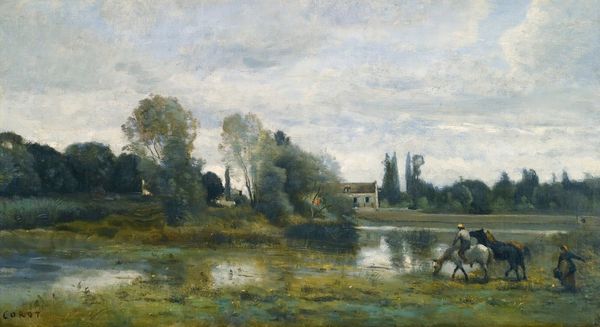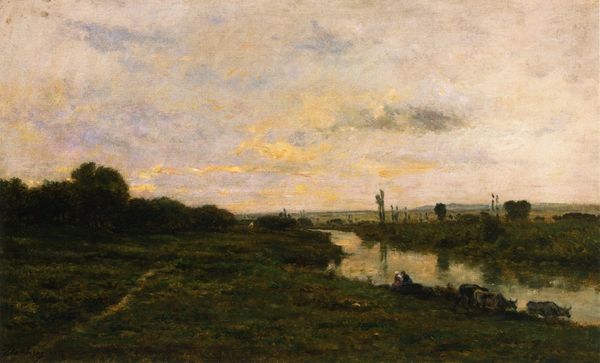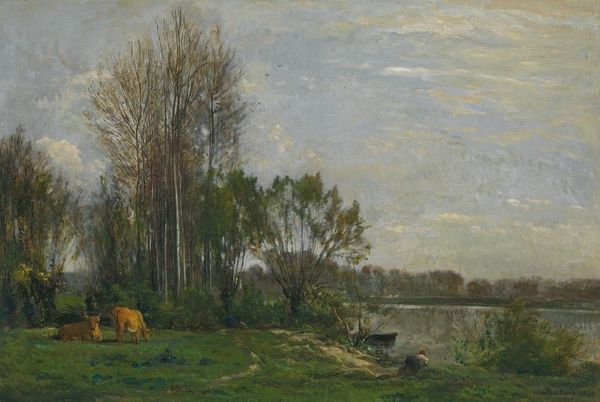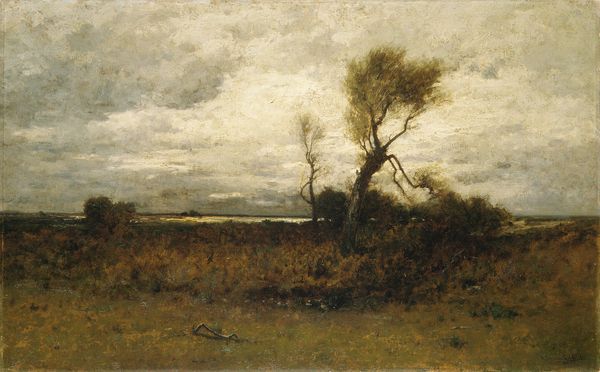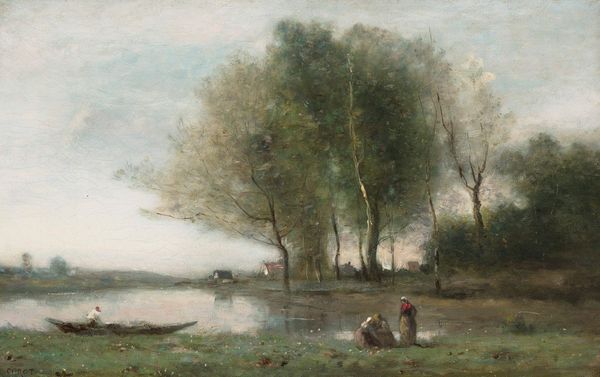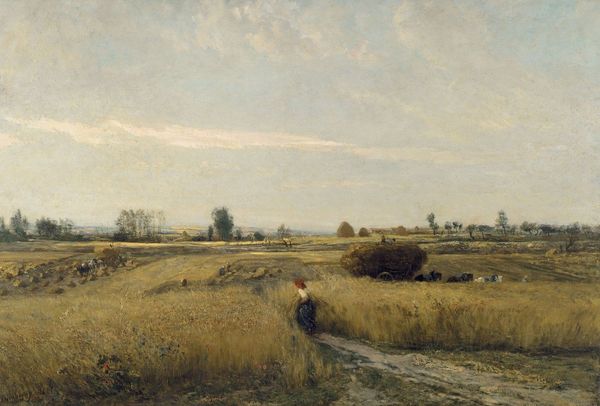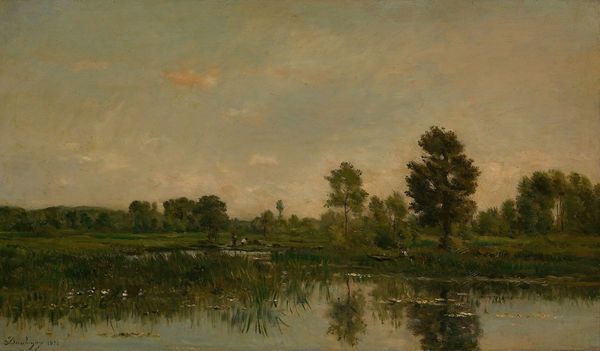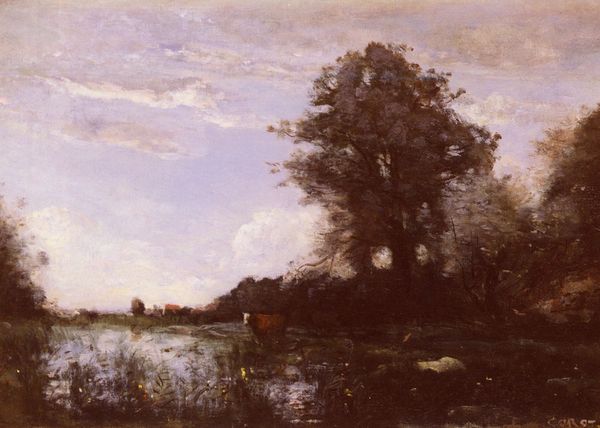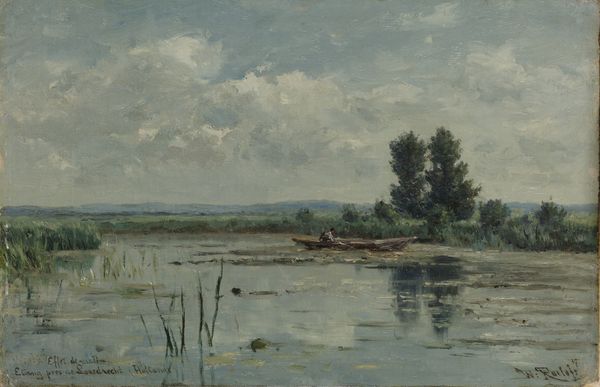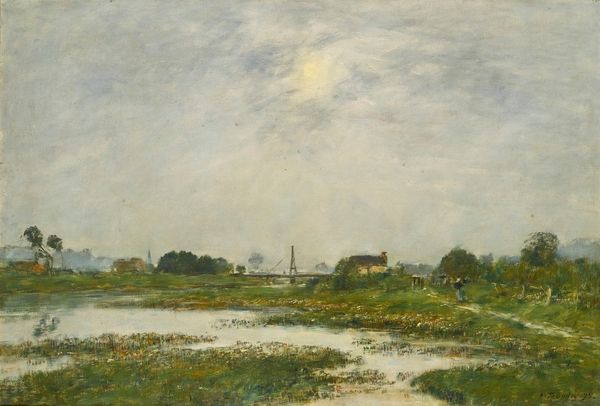
painting, plein-air, oil-paint
#
dutch-golden-age
#
painting
#
impressionism
#
plein-air
#
oil-paint
#
landscape
#
oil painting
#
watercolor
#
realism
Dimensions: height 41 cm, width 50 cm, depth 10 cm, weight 9 kg
Copyright: Rijks Museum: Open Domain
Curator: Here we have Paul Joseph Constantin Gabriël's "A Watercourse near Abcoude" painted in 1878, held here at the Rijksmuseum. Editor: It feels heavy, doesn't it? Like the air is thick with moisture and the oil paint almost replicates the mud and water of the scene itself. There’s a quiet stillness in it too. Curator: Gabriël, working within the later traditions of the Dutch Golden Age landscapes, truly captures a specific atmosphere. Notice the dominance of the sky; it's a testament to the Dutch tradition of emphasizing atmospheric conditions. It gives me a kind of melancholy feeling. Editor: Absolutely, that gray sky speaks volumes. I’m struck by the visible brushstrokes, though. It's a work created 'en plein air' I imagine, given the raw quality. You can sense Gabriël battling with the fleeting light. It hints at labor and material realities in painting. Curator: Indeed, and the windmill on the horizon is like a tiny sentinel. Windmills were very symbolic, weren’t they? Serving not only for labor, but acting as powerful cultural symbols of Dutch resilience, and dominance over nature. Editor: Though that small band of laborers gives this scene a strong, socio-historical weight. The backbreaking work required for these polder landscapes shouldn't be glossed over either. These elements were crucial in shaping the Dutch economy and environment at this time, literally reshaping the land! Curator: Yes, you're right, that tension exists. This landscape isn't just pretty scenery. Gabriël includes those figures, maybe to suggest an essential component: human effort within the land's narrative. It offers a visual embodiment of the labor needed to sustain that very "Dutchness" you’re speaking about. Editor: And while he clearly understands those symbolic dimensions, the artist, working on-site, also gives us a direct access to the materiality of it all: of the painting itself, the land it shows, and those working in the fields. You can almost smell the damp earth, and hear the buzz of insects. Curator: Precisely, those sensory details. It's more than just a representation, and by painting outside, it's meant to deliver an immediate, honest perspective on the environment itself. Editor: Looking closely at the textured surface is as enlightening as contemplating any metaphorical meaning it might hold! The materiality conveys such authenticity, and invites the viewer into a broader exploration of social existence at the time of its creation. Curator: I find it rewarding how two apparently contrary modes of analysis—symbols versus material conditions—meet here. Editor: Yes, now when I step back and look, it is striking. Each approach enriches the work in meaningful ways!
Comments
No comments
Be the first to comment and join the conversation on the ultimate creative platform.
